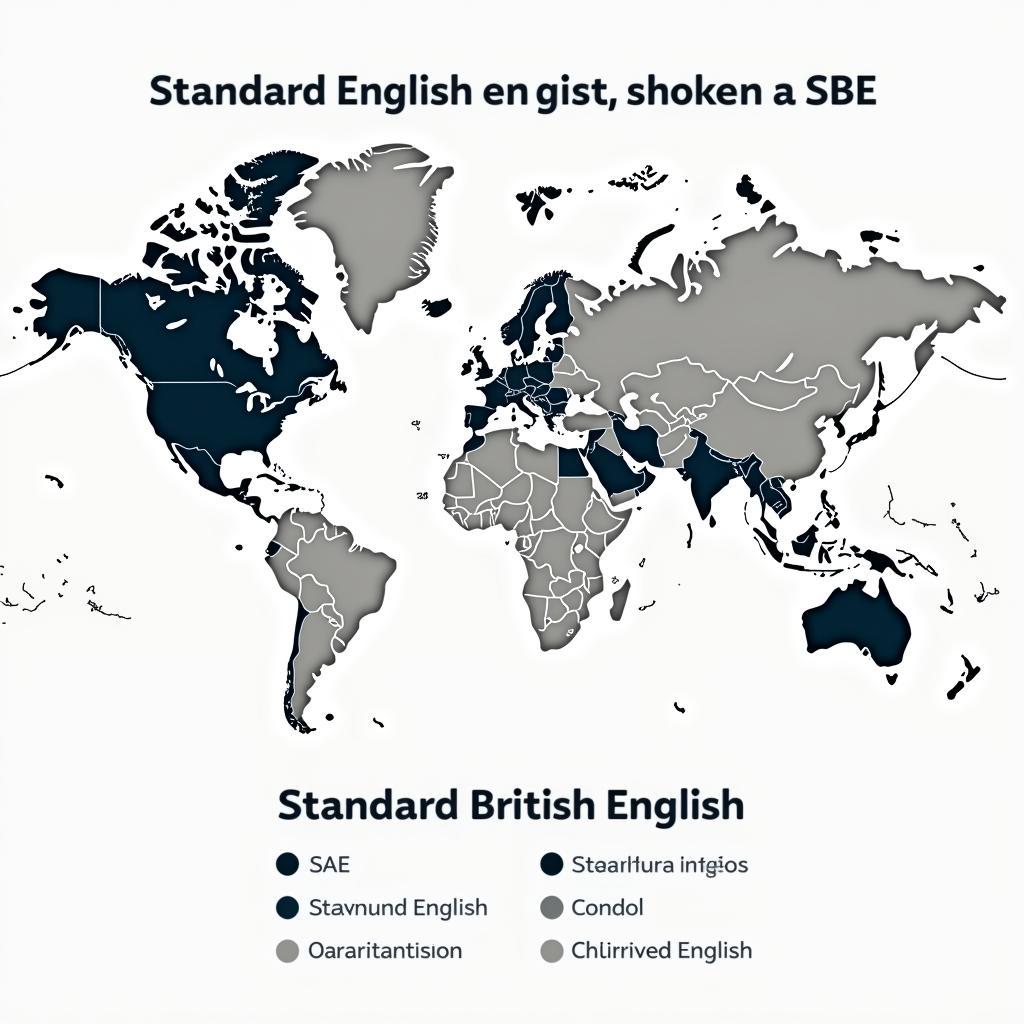The terms “standard” and “standardized” often pop up in discussions about language, sometimes causing confusion. While seemingly interchangeable, these words carry distinct meanings, especially when discussing the intricacies of English. This article delves into the differences between “standard” and “standardized,” clarifying their usage and shedding light on their implications for language learners and educators alike.
Decoding “Standard” in the Realm of Language
“Standard,” when used in the context of language, refers to a dialect or variety considered socially prestigious and widely accepted as the norm for formal communication. This “standard” language is often associated with education, government, and media, serving as a benchmark for written and spoken discourse in professional and academic settings.
However, it’s crucial to understand that “standard” doesn’t equate to “superior.” It’s not inherently better than other dialects; rather, it holds a position of power and influence due to historical and social factors. For instance, Standard American English (SAE) is widely recognized in the United States, while Standard British English (SBE) enjoys similar status in the United Kingdom.
 Map illustrating standard english variations
Map illustrating standard english variations
Unpacking the Concept of “Standardized” Language
“Standardized,” on the other hand, implies a more deliberate and often artificial process of codifying and regulating a language. This involves establishing fixed norms for grammar, vocabulary, pronunciation, and spelling, aiming for uniformity and consistency in both written and spoken forms.
Standardization often occurs alongside the development of dictionaries, grammar books, and educational materials, solidifying the rules and conventions of a language. A prime example is the standardization of English through the efforts of Samuel Johnson’s dictionary in the 18th century and Noah Webster’s dictionary in the 19th century. These works played a pivotal role in shaping American and British English, respectively.
Comparing and Contrasting “Standard” vs. “Standardized”
While both terms relate to establishing norms in language, key distinctions exist:
- Origin: Standard languages typically evolve organically through social and historical influences, while standardized languages undergo a more deliberate and structured process of codification.
- Flexibility: Standard languages tend to be more fluid, allowing for regional variations and evolving over time. Standardized languages, with their codified rules, often exhibit greater resistance to change.
- Prescriptiveness: The term “standardized” carries a more prescriptive connotation, emphasizing adherence to established rules. “Standard” language, while often used in formal settings, may allow for greater flexibility and variation in informal contexts.
Navigating the “Standard” vs. “Standardized” Landscape
The distinction between “standard” and “standardized” has significant implications for language learning and teaching. Educators often grapple with the challenge of promoting “standard” English while acknowledging the validity and richness of diverse dialects.
 Students from diverse backgrounds engaging in a classroom discussion
Students from diverse backgrounds engaging in a classroom discussion
Moreover, the quest for a single, universally accepted “standard” English remains elusive. The global spread of English has led to the emergence of numerous regional variations, each with its unique linguistic features.
Conclusion: Embracing Linguistic Diversity in a “Standard” World
Understanding the nuances of “standard” and “standardized” language is essential for fostering effective communication and appreciating the dynamic nature of language itself. While striving for clarity and mutual understanding, it’s equally crucial to acknowledge and respect the diversity and evolution of languages across the globe.
FAQ
-
Is Standard English the same in all English-speaking countries? No, Standard English varies across countries. For instance, there are notable differences between Standard American English and Standard British English.
-
Is it wrong to speak a dialect that is not considered “standard”? Absolutely not! Dialects are a natural and integral part of language variation. They reflect cultural and regional identities and should be celebrated.
-
Why is it important to learn “standard” English? Proficiency in “standard” English can be beneficial for academic success, professional advancement, and effective communication in formal settings.
-
Does the use of “standardized” English stifle creativity in language? While standardization aims for consistency, it doesn’t necessarily hinder creativity. Writers and speakers can still employ stylistic choices and innovative language within the framework of standard grammar and vocabulary.
-
How can I improve my understanding and use of “standard” English? Engaging with a variety of written and spoken English, such as books, articles, news broadcasts, and podcasts, can significantly enhance your grasp of “standard” language.
For more insights into navigating the complexities of English language, explore our related articles on if he were vs if he was and sat vs toefl difficulty.
Need Help with Your English Language Journey?
Contact us at 02838172459, email us at [email protected], or visit us at 596 Đ. Hậu Giang, P.12, Quận 6, Hồ Chí Minh 70000, Việt Nam. Our dedicated team is available 24/7 to assist you.